Digs & Discoveries
Off the Grid
By MARLEY BROWN
Tuesday, August 10, 2021
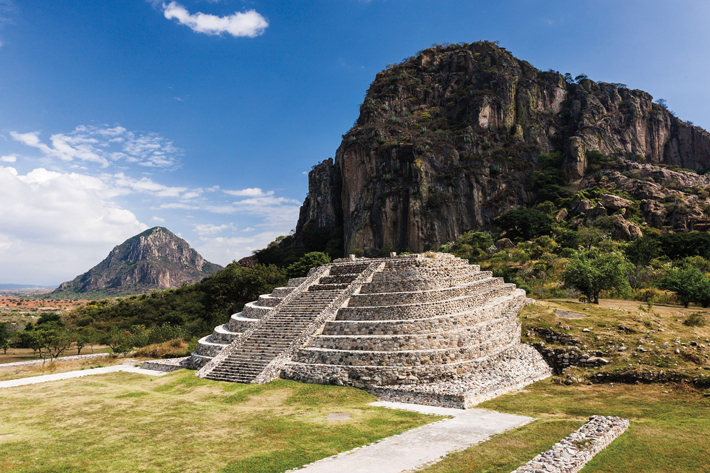 Located in the state of Morelos some 50 miles southwest of Mexico City, at the base of a pair of granodiorite hills that rise up sharply above Mexico’s central highlands, Chalcatzingo was a regional trade hub during Mesoamerica’s Middle Formative period (ca. 700–500 B.C.). For decades, archaeologists have marveled at similarities between dozens of bas-relief rock carvings discovered at Chalcatzingo and similar examples found at Olmec centers on Mexico’s southern Gulf Coast, nearly 300 miles away. This led many to suggest that Chalcatzingo was an Olmec colony.
Located in the state of Morelos some 50 miles southwest of Mexico City, at the base of a pair of granodiorite hills that rise up sharply above Mexico’s central highlands, Chalcatzingo was a regional trade hub during Mesoamerica’s Middle Formative period (ca. 700–500 B.C.). For decades, archaeologists have marveled at similarities between dozens of bas-relief rock carvings discovered at Chalcatzingo and similar examples found at Olmec centers on Mexico’s southern Gulf Coast, nearly 300 miles away. This led many to suggest that Chalcatzingo was an Olmec colony.
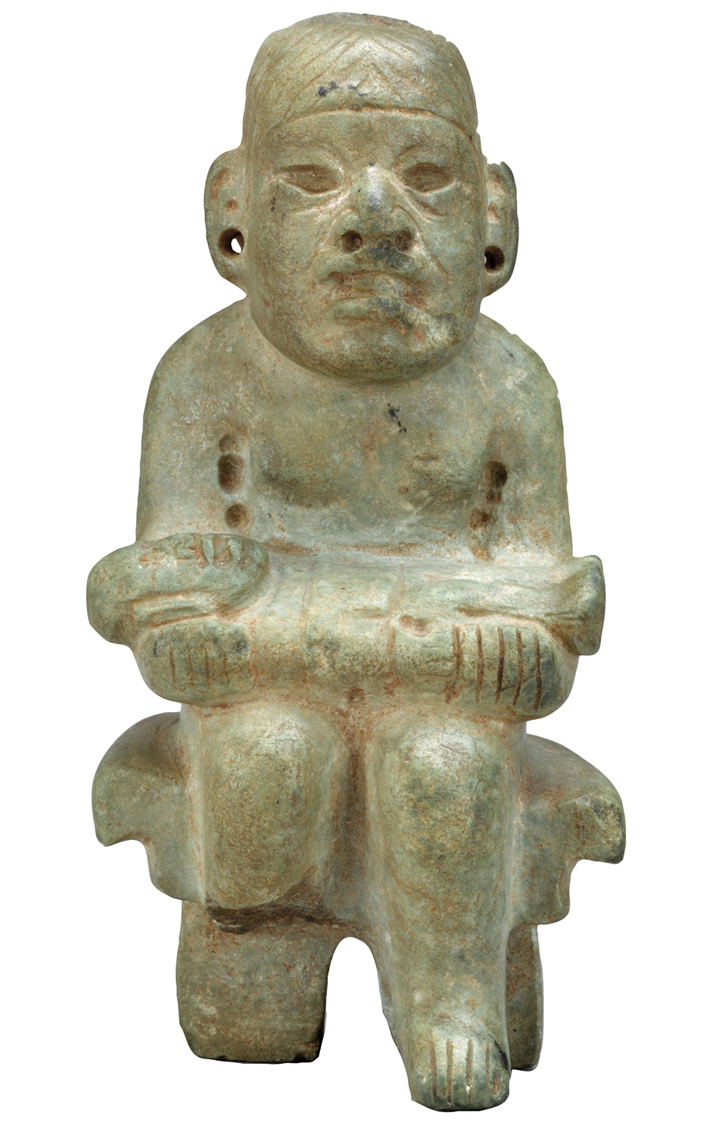 At its apogee, Chalcatzingo is believed to have covered more than 100 acres and been home to between 500 and 1,000 people. Chalcatzingo’s farmers engineered agricultural terraces and water-control systems on some of the most fertile land in the region. Builders constructed public plazas, and artists lined them with stone carvings depicting deities and mythical events. Individuals shown on the stelas that have been interpreted as rulers of Chalcatzingo appear to channel cosmic and solar powers and act as intermediaries to the gods. Chalcatzingo’s largest monument is a nearly square raised platform measuring some 230 feet on each side. Nearby, a sunken patio with a tabletop altar for religious ceremonies at its center is reminiscent of Olmec-style public architecture. While the Olmec civilization is generally considered to have gone into rapid decline around 400 B.C., Chalcatzingo continued to be occupied through the Classic period (ca. A.D 250–900). There are remains of a ball court and two small pyramid mounds. Radiocarbon dating of evidence from excavations around these structures suggests they were built beginning around the sixth century A.D., when the site was under the influence of the megacity of Teotihuacan, 70 miles northeast.
At its apogee, Chalcatzingo is believed to have covered more than 100 acres and been home to between 500 and 1,000 people. Chalcatzingo’s farmers engineered agricultural terraces and water-control systems on some of the most fertile land in the region. Builders constructed public plazas, and artists lined them with stone carvings depicting deities and mythical events. Individuals shown on the stelas that have been interpreted as rulers of Chalcatzingo appear to channel cosmic and solar powers and act as intermediaries to the gods. Chalcatzingo’s largest monument is a nearly square raised platform measuring some 230 feet on each side. Nearby, a sunken patio with a tabletop altar for religious ceremonies at its center is reminiscent of Olmec-style public architecture. While the Olmec civilization is generally considered to have gone into rapid decline around 400 B.C., Chalcatzingo continued to be occupied through the Classic period (ca. A.D 250–900). There are remains of a ball court and two small pyramid mounds. Radiocarbon dating of evidence from excavations around these structures suggests they were built beginning around the sixth century A.D., when the site was under the influence of the megacity of Teotihuacan, 70 miles northeast.
Dartmouth College archaeologist Deborah Nichols says that a unique ceramic tradition discovered at Chalcatzingo—the creation of anthropomorphic figurines—suggests that the site was not in fact an Olmec colony, but that there was likely direct cultural exchange between Chalcatzingo and the Gulf Coast on an equitable basis. “There were probably some people from the Gulf Coast living at Chalcatzingo, maybe even some marriage and kinship ties, as well as direct trading relationships,” Nichols says. This may explain the similarity in artistic styles.
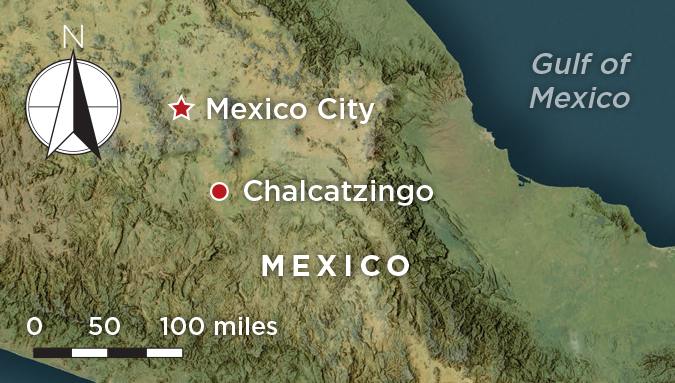 THE SITE
THE SITE
Before planning a visit, make sure to confirm the site’s hours, which can be found on the website of Mexico’s National Institute for Anthropology and History. The site is located roughly half a mile outside the modern village of the same name. Chalcatzingo is well worth a day trip from Mexico City, which can be arranged with a tour company. Because the site does not have a great deal of signage, local tour guides are recommended. Apart from the architectural plazas, the pyramid structures, and the ball court, they can show you stelas you might otherwise miss, as well as a number of petroglyphs found on the lower slopes of the hills.
WHILE YOU'RE THERE
The nearby city of Cuernavaca boasts a jewel of a colonial core dating back to the early sixteenth century, including the Palace of Cortés, built between 1523 and 1528. The building is now a museum dedicated to the history of Morelos and features artifacts from Chalcatzingo.
Herodian Hangout
By MARLEY BROWN
Tuesday, August 10, 2021
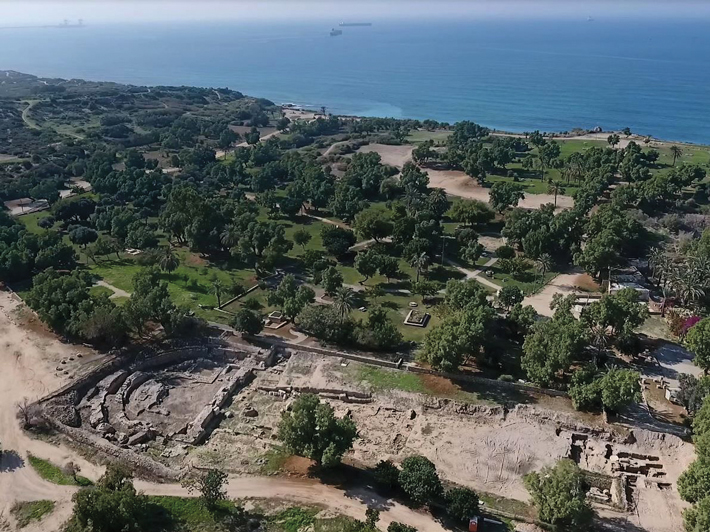 A 2,000-year-old Roman basilica complex has been uncovered in Ashkelon, on Israel’s Mediterranean coast. The structure, which measures roughly 360 feet long and 130 feet wide, was a multipurpose public building where Ashkelon’s residents would have socialized, conducted business transactions, and even attended theater performances. It includes a colonnade with marble columns standing some 40 feet tall as well as a central hall and two side halls. The floors and walls of the building were also made of marble, which is thought to have been imported from what is now Turkey. The team, led by Israel Antiquities Authority archaeologists Rachel Bar-Natan, Sa’ar Ganor, and Federico Kobrin, uncovered coins near the building’s foundations that date to the reign of Herod the Great (37–4 B.C.), who was renowned for his ambitious building projects. Some historical sources suggest that Herod’s family came from Ashkelon, explains Bar-Natan, suggesting the basilica may have been constructed during the rule of a king who had personal connections to the city.
A 2,000-year-old Roman basilica complex has been uncovered in Ashkelon, on Israel’s Mediterranean coast. The structure, which measures roughly 360 feet long and 130 feet wide, was a multipurpose public building where Ashkelon’s residents would have socialized, conducted business transactions, and even attended theater performances. It includes a colonnade with marble columns standing some 40 feet tall as well as a central hall and two side halls. The floors and walls of the building were also made of marble, which is thought to have been imported from what is now Turkey. The team, led by Israel Antiquities Authority archaeologists Rachel Bar-Natan, Sa’ar Ganor, and Federico Kobrin, uncovered coins near the building’s foundations that date to the reign of Herod the Great (37–4 B.C.), who was renowned for his ambitious building projects. Some historical sources suggest that Herod’s family came from Ashkelon, explains Bar-Natan, suggesting the basilica may have been constructed during the rule of a king who had personal connections to the city.
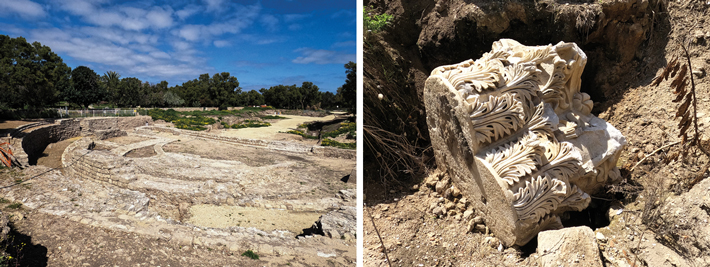
A Twisted Hoard
By JASON URBANUS
Tuesday, August 10, 2021
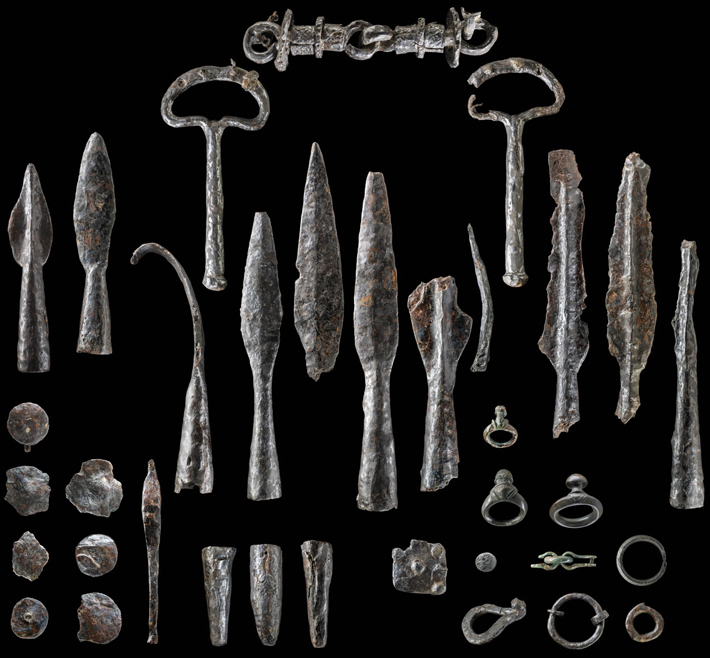 A metal detectorist investigating the area around the ancient hillfort of Wilzenberg in western Germany happened upon one of the largest hoards of Iron Age metal objects ever found in the region. The collection is made up of more than 100 weapons and other pieces of military equipment dating to between the third and first centuries B.C. It includes spearheads, swords, shield fragments, belt hooks, and parts of horse harnesses. One particularly rare object is a special bridle that was used on chariot horses and allowed the driver to control the vehicle more precisely.
A metal detectorist investigating the area around the ancient hillfort of Wilzenberg in western Germany happened upon one of the largest hoards of Iron Age metal objects ever found in the region. The collection is made up of more than 100 weapons and other pieces of military equipment dating to between the third and first centuries B.C. It includes spearheads, swords, shield fragments, belt hooks, and parts of horse harnesses. One particularly rare object is a special bridle that was used on chariot horses and allowed the driver to control the vehicle more precisely.
Many of the swords were deliberately curled and bent, while some spear and lance tips were blunted and deformed. Researchers believe that the weapons were taken by local warriors from enemy combatants on the battlefield and brought back to the Wilzenberg hillfort as trophies. They were then deliberately rendered unusable in a symbolic act of triumph—a common ritual in Iron Age Celtic Europe.
Crowning Glory
By BENJAMIN LEONARD
Tuesday, August 10, 2021
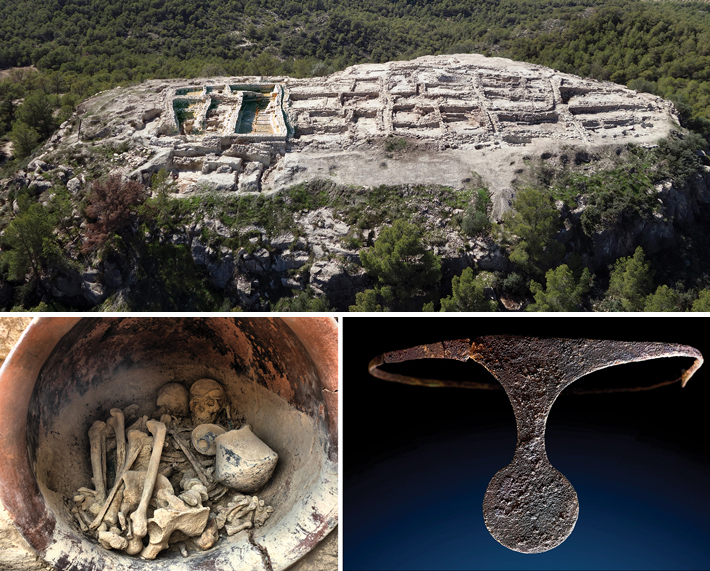
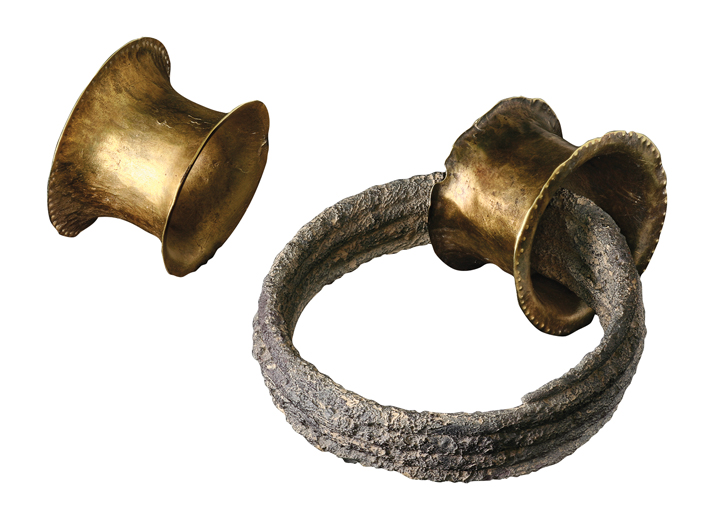 A rich burial unearthed in southeast Spain suggests that women may have held greater power in the Bronze Age El Argar culture than previously understood. In a large building at the palace site of La Almoloya, a team of archaeologists discovered the remains of a 35- to 40-year-old man and a 25- to 30-year-old woman who had been buried in a large ceramic jar in the mid-seventeenth century B.C. The room where the couple was buried had a raised platform and benches on all four sides that could seat more than 50 people. It appears to have served as an important gathering space. “The fact that the woman and man were buried in the most outstanding building and ample hall we know of suggests that they were both linked to the political sphere,” says archaeologist Roberto Risch of the Autonomous University of Barcelona.
A rich burial unearthed in southeast Spain suggests that women may have held greater power in the Bronze Age El Argar culture than previously understood. In a large building at the palace site of La Almoloya, a team of archaeologists discovered the remains of a 35- to 40-year-old man and a 25- to 30-year-old woman who had been buried in a large ceramic jar in the mid-seventeenth century B.C. The room where the couple was buried had a raised platform and benches on all four sides that could seat more than 50 people. It appears to have served as an important gathering space. “The fact that the woman and man were buried in the most outstanding building and ample hall we know of suggests that they were both linked to the political sphere,” says archaeologist Roberto Risch of the Autonomous University of Barcelona.
Compared with the man, the woman was buried with a much more lavish array of gold and silver objects, including an awl, earplugs with spiral loops, and a silver diadem atop her head. The diadem is nearly identical to silver crowns found in the graves of four other women excavated in the nineteenth century at the site of El Argar, from which the culture derives its name. These burials, Risch explains, also contained more high-value objects than contemporaneous male burials. “This makes a good argument that women played a special role in the economic and political organization of this society,” says Risch.
Head of State
By BENJAMIN LEONARD
Tuesday, August 10, 2021
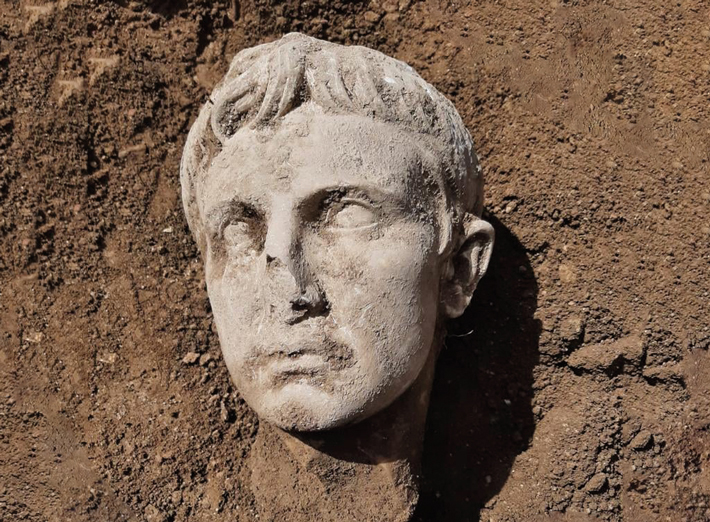 While excavating behind a medieval wall in the southern Italian town of Isernia, archaeologists uncovered a 14-inch-tall marble head of Rome’s first emperor, Augustus (r. 27 B.C.–A.D. 14). Researchers identified the emperor based on the sculpture’s distinctive eyes and coiffure, which are hallmarks of portraits of Augustus. Isernia, known in Roman times as Aesernia, was originally settled by the Samnites, an ancient people from south-central Italy’s Apennine Mountains, but by 295 B.C. they had been conquered by the Romans. In 90 B.C., the Samnites recaptured the Roman colony, only to lose it once again to Roman control. By the reign of the emperor Augustus, Aesernia had become a prosperous Roman town.
While excavating behind a medieval wall in the southern Italian town of Isernia, archaeologists uncovered a 14-inch-tall marble head of Rome’s first emperor, Augustus (r. 27 B.C.–A.D. 14). Researchers identified the emperor based on the sculpture’s distinctive eyes and coiffure, which are hallmarks of portraits of Augustus. Isernia, known in Roman times as Aesernia, was originally settled by the Samnites, an ancient people from south-central Italy’s Apennine Mountains, but by 295 B.C. they had been conquered by the Romans. In 90 B.C., the Samnites recaptured the Roman colony, only to lose it once again to Roman control. By the reign of the emperor Augustus, Aesernia had become a prosperous Roman town.
Advertisement
Advertisement
IN THIS ISSUE
Features
The Pursuit of Wellness
Secret Rites of Samothrace
Searching for the Fisher Kings
Letter from Scotland
Digs & Discoveries
Viking Fantasy Island
Kaleidoscopic Walls
For Eternity
Maryland's First Fort
Snake Guide
Man of the Moment
Kiwi Colonists
Leisure Seekers
Neanderthal Hearing
Head of State
A Twisted Hoard
Crowning Glory
Herodian Hangout
Off the Grid
Around the World
Maya city parks, Paleoindian obsidian traders, Çatalhöyük smoke alarm, and a shark attack in Japan
Artifact
Putting a finger on fate
Advertisement

Recent Issues
-
 May/June 2024
May/June 2024
-
 March/April 2024
March/April 2024
-
 January/February 2024
January/February 2024
-
 November/December 2023
November/December 2023
-
 September/October 2023
September/October 2023
-
 July/August 2023
July/August 2023
-
 May/June 2023
May/June 2023
-
 March/April 2023
March/April 2023
-
 January/February 2023
January/February 2023
-
 November/December 2022
November/December 2022
-
 September/October 2022
September/October 2022
-
 July/August 2022
July/August 2022
-
 May/June 2022
May/June 2022
-
 March/April 2022
March/April 2022
-
 January/February 2022
January/February 2022
-
 November/December 2021
November/December 2021
-
 September/October 2021
September/October 2021
-
 July/August 2021
July/August 2021
-
 May/June 2021
May/June 2021
-
 March/April 2021
March/April 2021
-
 January/February 2021
January/February 2021
-
 November/December 2020
November/December 2020
-
 September/October 2020
September/October 2020
-
 July/August 2020
July/August 2020
-
 May/June 2020
May/June 2020
-
 March/April 2020
March/April 2020
-
 January/February 2020
January/February 2020
-
 November/December 2019
November/December 2019
-
 September/October 2019
September/October 2019
-
 July/August 2019
July/August 2019
-
 May/June 2019
May/June 2019
-
 March/April 2019
March/April 2019
-
 January/February 2019
January/February 2019
-
 November/December 2018
November/December 2018
-
 September/October 2018
September/October 2018
-
 July/August 2018
July/August 2018
-
 May/June 2018
May/June 2018
-
 March/April 2018
March/April 2018
-
 January/February 2018
January/February 2018
-
 November/December 2017
November/December 2017
-
 September/October 2017
September/October 2017
-
 July/August 2017
July/August 2017
-
 May/June 2017
May/June 2017
-
 March/April 2017
March/April 2017
-
 January/February 2017
January/February 2017
-
 November/December 2016
November/December 2016
-
 September/October 2016
September/October 2016
-
 July/August 2016
July/August 2016
-
 May/June 2016
May/June 2016
-
 March/April 2016
March/April 2016
-
 January/February 2016
January/February 2016
-
 November/December 2015
November/December 2015
-
 September/October 2015
September/October 2015
-
 July/August 2015
July/August 2015
-
 May/June 2015
May/June 2015
-
 March/April 2015
March/April 2015
-
 January/February 2015
January/February 2015
-
 November/December 2014
November/December 2014
-
 September/October 2014
September/October 2014
-
 July/August 2014
July/August 2014
-
 May/June 2014
May/June 2014
-
 March/April 2014
March/April 2014
-
 January/February 2014
January/February 2014
-
 November/December 2013
November/December 2013
-
 September/October 2013
September/October 2013
-
 July/August 2013
July/August 2013
-
 May/June 2013
May/June 2013
-
 March/April 2013
March/April 2013
-
 January/February 2013
January/February 2013
-
 November/December 2012
November/December 2012
-
 September/October 2012
September/October 2012
-
 July/August 2012
July/August 2012
-
 May/June 2012
May/June 2012
-
 March/April 2012
March/April 2012
-
 January/February 2012
January/February 2012
-
 November/December 2011
November/December 2011
-
 September/October 2011
September/October 2011
-
 July/August 2011
July/August 2011
-
 May/June 2011
May/June 2011
-
 March/April 2011
March/April 2011
-
 January/February 2011
January/February 2011
Advertisement






